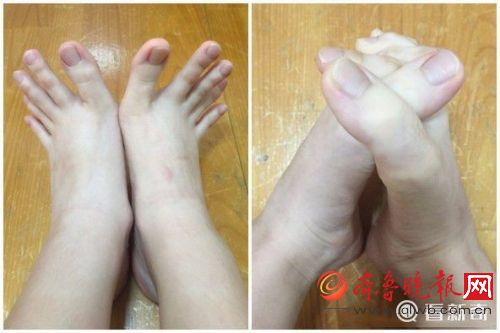

ZHENGZHOU, July 20 -- The bodies buried at Yinxu, or the Ruins of Yin, one of China's oldest archaeological sites, were captives from ethnic minority groups, rather than slaves, said an archaeologist in central China's Henan province.
The finding may help change the notion that the Shang Dynasty (16-11 cent. BC), China's first recorded dynasty, was a slave society, according to Tang Jigen, head of the Anyang research branch of the Chinese Academy of Social Sciences.
Named after the last capital of Shang, which was in Anyang, Henan, the Ruins of Yin were famous for the discovery of oracle bones and script.
Characters on the oracle bones stated that more than 10,000 people were killed and buried with the dead aristocrats as sacrificial offerings. Tang had always wondered about the identities of those people.
"In the burial pits we found the number of skeletons in each one numbered 10, 30 and 50," he said. This reminded him of records on the oracle bones.
"In the records of emperors' ancestor worship we always see expressions like '10 Qiang people,' '30 Qiang people' and '50 Qiang people,'"he said. The Qiang were an ancient ethnic minority group in western China.
A bold idea came to Tang: could those buried as sacrificial offerings be from ethnic minority groups?
Through strontium isotope analysis, they found that the newly excavated bones in the Ruins of Yin and those from Qiang settlements were quite similar.
They also unearthed 22 skulls from the tomb passage where the world's heaviest ancient bronze item, the Houmuwu ding, was discovered, and they found that they belonged to the Qiang people as well.
"In ancient times, the Qiang population was large, and they were neighbors of the Shang empire," Tang said. When the Shang grew stronger, it drove the Qiang people further to the northwest.
The Qiang people herded sheep for a living. Tang now thinks that when the Shang people caught sheep, they captured the Qiang herdsmen as well. The sheep were eaten, and the herdsmen were buried as sacrificial offerings, according to Tang.
"The number of the strontium isotope varies from one place to another," he said. "So from it we can see that the captives were killed immediately. Otherwise, if they had worked as slaves for a few years before being killed, the number would have been different."
Among the 55 ethnic minorities in China today, there is also one called the Qiang in the western part of the country. They have a population of about 300,000, and more than 10,000 people from the group were killed in the 2008 earthquake that jolted China's Sichuan province.
"We need further study to know whether those buried in the Ruins of Yin were ancestors of the Qiang people today," Tang said.
He noted that the findings help people understand more about the Shang Dynasty, which some people believe was a slave society.
"In slave societies, slaves were killed and buried as sacrificial offerings," he said. "But those in the Ruins of Yin were not slaves, but captives."
The Ruins of Yin, where excavation officially started in 1928, were the site of the discovery of the earliest Chinese characters written on bone and tortoise shell.
July marks the 10th anniversary since the Yin Ruins were added to the World Heritage List in 2006 by the United NationsEnvironmental, Scientific and Cultural Organization (UNESCO), when new findings were announced, including the discovery of the remains of a complete canal system.
 Who Will Fit The Chinese Roles In Game Of Thrones?
Who Will Fit The Chinese Roles In Game Of Thrones? China's Hubei Shennongjia added to World Heritage List
China's Hubei Shennongjia added to World Heritage List "Straddling bus" starts production in east China
"Straddling bus" starts production in east China Girl goes viral for finger-long toes
Girl goes viral for finger-long toes Five made-in-China hi-tech breakthroughs
Five made-in-China hi-tech breakthroughs HK-Zhuhai-Macao Bridge to open to traffic
HK-Zhuhai-Macao Bridge to open to traffic China opens its first combined transport service to Nepal
China opens its first combined transport service to Nepal Students take stylish bikini graduations photos
Students take stylish bikini graduations photos Charming dancing students pose for graduation photos
Charming dancing students pose for graduation photos Top 10 livable Chinese cities
Top 10 livable Chinese cities Top 20 hottest women in the world in 2014
Top 20 hottest women in the world in 2014 Top 10 hardest languages to learn
Top 10 hardest languages to learn China’s Top 10 Unique Bridges, Highways and Roads
China’s Top 10 Unique Bridges, Highways and Roads Barring Russia will tarnish Olympic spirit
Barring Russia will tarnish Olympic spirit Wukan disputes highlight conflict of interest at heart of rural development
Wukan disputes highlight conflict of interest at heart of rural development S.Korean companies in China say they’re not impacted by anti-missile system
S.Korean companies in China say they’re not impacted by anti-missile system Couples say dedication, not time, determines the strength of a marriage
Couples say dedication, not time, determines the strength of a marriageDay|Week